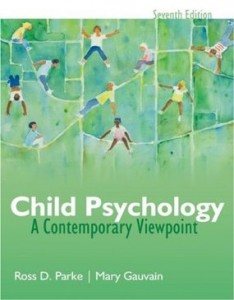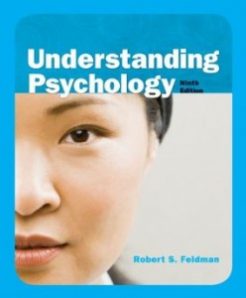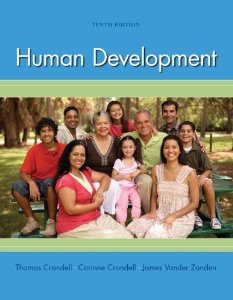Description
Child Psychology A Contemporary View Point
Child Psychology A Contemporary View Point Parke
Child Psychology A Contemporary View Point Parke 7th
Child Psychology A Contemporary View Point Parke 7th Test Bank
Test Bank for Child Psychology A Contemporary View Point, 7th Edition : Parke Download
***THIS IS NOT THE ACTUAL BOOK. YOU ARE BUYING the Test Bank in e-version of the following book***
Name: Child Psychology A Contemporary View Point
Author: Parke
Edition: 7th
ISBN-10: 007338268X
ISBN-13: 978-0073382685
Type: Test Bank
– The test bank is what most professors use an a reference when making exams for their students, which means there’s a very high chance that you will see a very similar, if not exact the exact, question in the test!
– The file is either in pdf, doc, rtf or zipped in the package and can easily be read on PCs and Macs.
– Delivery is INSTANT. You can download the files IMMEDIATELY once payment is done.
We also faced similar difficulities when we were students, and we understand how you feel.
But now, with the Child Psychology A Contemporary View Point 7th Test Bank, you will be able to
* Anticipate the type of the questions that will appear in your exam.
* Reduces the hassle and stress of your student life.
* Improve your studying and also get a better grade!
* Get prepared for examination questions.
* Can save you time and help you understand the material.
This is the quality of service we are providing and we hope to be your helper.
Delivery is in the next moment. Test Bank is accurate.
Prepare to receive your Child Psychology A Contemporary View Point 7th Test Bank in the next moment.
ISBN-10: 007338268X
ISBN-13: 978-0073382685
If you have any questions, or would like a receive a sample chapter before your purchase, please contact us at inquiry@testbankcorp.com
Child Psychology A Contemporary View Point
Child Psychology A Contemporary View Point Parke
Child Psychology A Contemporary View Point Parke 7th
Child Psychology A Contemporary View Point Parke 7th Test Bank
Test Bank for Child Psychology A Contemporary View Point, 7th Edition : Parke Download
c1
Student: ___________________________________________________________________________
1. The field of child development seeks to
A. predict the outcome of development.
B. uncover the processes that underlie developmental changes.
C. describe individual differences between children.
D. identify the stages of childhood.
2. The term used to describe the genetic or biological processes that lead to the naturally unfolding course of growth is
A. heredity.
B. predestination.
C. maturation.
D. nature.
3. In trying to understand influences on development, today’s developmental psychologists focus on
A. the interplay between biology and environment.
B. the interplay between predetermination and predestination.
C. the environment exclusively.
D. the ways in which biological factors are the primary cause of children’s behavior.
4. When development is viewed as consisting of a series of discrete, distinct steps, it is said to be
A. continuous.
B. discontinuous.
C. atypical.
D. active.
5. Research by Michael Rutter and colleagues found that children who were raised in deprived settings, but were later adopted into healthy families, showed positive changes in their adjustment. This demonstrates that
A. development is continuous.
B. development is discontinuous.
C. a disruption in behavioral continuity can be positive.
D. disruptions in behavioral continuity only occur under extreme conditions.
6. The interactionist viewpoint stresses the idea that
A. parents shape their children’s behavior during parent-child interactions.
B. the context is more important than individual characteristics.
C. interactions between contextual factors are what shape development.
D. individual characteristics interact with contextual factors during development.
7. Erin initially appeared to cope with her parents’ divorce well. Later, she exhibited problems with school and in her friendships. Her response to risk is an example of
A. a coping factor.
B. denial.
C. aftershock.
D. the sleeper effect.
8. In addition to helping organize and integrate existing information into a meaningful whole, developmental theories also
A. prove which issues are factual.
B. are unchanging, thereby serving as a standard for comparison purposes.
C. are always global in nature, as opposed to being concerned with specific areas of development.
D. lead to testable predictions about behavior.
9. Which of the following statements does NOT describe the structural-organismic perspectives of development of Freud and Piaget?
A. The stages that occur during development are universal.
B. Development is based on biological processes.
C. Objective reality is central in the child’s development.
D. Development is discontinuous.
10. The ego is the component of the personality that
A. operates on the pleasure principle.
B. is rational and reality-bound and attempts to gratify the needs of the person through appropriate social behavior.
C. is equivalent to the conscience.
D. results from an internalization of societal values.
11. When Antonia grabs a handful of candy from a bowl on the table, her brother Leonard yells, “No! You’re only supposed to take one piece!” According to Freudian theory, Leonard’s reaction represents the
A. id.
B. ego.
C. superego.
D. sibling rivalry.
12. At dinner one night, your 4-year-old announces that she knows the difference between boys and girls. When you ask her what it is, she proudly states that girls sit when they go potty and boys stand, and she knows this because she was able to see into the boys’ bathroom at preschool today. Your daughter’s interest in differences between boys and girls probably indicates that she is in the
A. oral stage of development.
B. anal stage of development.
C. phallic stage of development.
D. genital stage of development.
13. One of Freud’s primary contributions to developmental psychology is that his theory brought attention to
A. the role that fathers play in a child’s early development.
B. sexual desires that individuals unconsciously harbor for their parents.
C. the ways in which development occurs gradually and incrementally.
D. the impact of early experiences on later development.
14. Your 2-year-old nephew is very proud of his abilities to do things his new baby sister cannot. He is pleased that he can feed himself and play with blocks and make his tricycle go without help. According to Erikson’s theory, which stage of development is he in?
A. Trust vs. mistrust
B. Autonomy vs. shame and doubt
C. Initiative vs. stagnation
D. Industry vs. inferiority
15. Jordan is 17 years old and has been searching for an identity since he was about 13. He has joined—and quit—various school organizations and tried several after-school jobs in his attempt to find out what kind of a career would interest him. According to Erikson’s theory, what might Jordan be at risk for if he does not eventually develop a stable definition of the self?
A. The mistrust of others
B. Shame and doubt over his own competence
C. Role confusion
D. Stagnation
16. A cognitive process through which children’s understanding of the world changes in an organized way is
A. adaptation.
B. reinforcement.
C. egocentrism.
D. concentration.
17. According to Piaget, infants learn about the world with their
A. mental structures and symbols.
B. sensory and motor abilities.
C. parents’ encouragement.
D. emotional templates.
18. Miguel and his family recently returned from a vacation. On the airplane ride home, Miguel became sick with the flu. Ever since, Miguel says he will never fly in an airplane again because airplanes make him sick. Which theoretical notion can best account for Miguel’s feelings?
A. c
B. Operant conditioning
C. Vicarious learning
D. Accommodation
19. According to behaviorism theorists, adults can reinforce aggression in children simply by
A. spanking.
B. ignoring the aggression.
C. paying attention to the aggression.
D. rewarding passive children.
20. Yvonne is arguing with Thomas over a toy while Pat watches. The toy is one that Pat loves to play with. Yvonne pushes Thomas to the ground and runs off with the toy. According to Bandura’s (1989) experiments with the bobo doll, Pat is likely to
A. give Yvonne any toy that she wants.
B. behave aggressively towards other children who are playing with toys that Pat wants.
C. help Thomas to his feet.
D. retrieve the toy for Thomas.
21. Which of the following is NOT one of the processes that govern how well a child will learn a new behavior, according to Bandura’s cognitive social learning theory?
A. Motivation to reproduce the behavior
B. Association of the behavior with reinforcement
C. Attention to the behavior
D. Retention of the behavior in memory
22. Information-processing theory emphasizes
A. the relationship between cognition and personality.
B. cognitive processes related to the nervous system.
C. cognitive processes that occur between the input of a stimulus and the response to that stimulus.
D. the effects of rewards on cognitive processes.
23. Theorists who employ computer analogies and flowcharts to explain development are operating from which theoretical perspective?
A. Behavioral
B. Organismic
C. Cognitive
D. Information processing
24. Dynamic systems theory emphasizes that developmental changes result from
A. influence exerted from adults to children.
B. the coordination of elements of a complex, integrated system.
C. growth of the nervous system.
D. maturation of the ego-identity.
25. According to dynamic systems theory, the principle of dynamism involves
A. large systems.
B. the whole being more than the sum of its parts.
C. the number of individuals in a system.
D. the interrelatedness of the parts of the system.
26. Morphogenesis refers to the principle that
A. most individuals reach essentially the same developmental milestones.
B. a system has the ability to adapt to internal and external changes.
C. a system has the capacity to remain stable.
D. a system is organized and contains more than just the sum of its parts.
27. Vygotsky proposed that child development is
A. due to genetic components of a culture.
B. a product of social and cultural experience.
C. a product of formal education.
D. a product of assimilation and accommodation.
28. According to Vygotsky, higher order cognitive functions are influenced by
A. one’s memory.
B. the child being able to solve problems independently.
C. interactions with those persons more skilled than the child.
D. cultural invariants.
29. The experience of children and adults who lived through the Great Depression shows
A. the importance of historical context on the developing child.
B. the importance of reinforcement on the developing child.
C. the importance of unconditional love on the developing child.
D. the importance of being able to use abstract reasoning.
30. The ethological perspective of development emphasizes
A. a series of sequential stages.
B. the role of parenting in development.
C. the role of learning in development.
D. environmental context and the adaptive value of behavior.
31. A key difference between ethological and evolutionary perspectives is that
A. ethological approaches have a strong focus on cognitive development.
B. evolutionary approaches have a strong focus on cognitive development.
C. evolutionary approaches have a weaker focus on cognitive development.
D. evolutionary approaches focus only on parenting behaviors and adaptive behaviors.
32. Settings that influence a child’s development but with which the child does not have direct contact, such as the workplace of the parents, are referred to as the
A. macrosystem.
B. exosystem.
C. mesosystem.
D. microsystem.
33. When a researcher accounts for cohort effects, she is recognizing that
A. historical context is an important source of influence on the developing child.
B. one must establish norms for behavior.
C. an error was made in the research design.
D. individual differences will always be present.
34. The ecological perspective of development emphasizes
A. a series of sequential stages.
B. the role of heredity in development.
C. the role of learning in development.
D. relationships among environmental systems.
35. Ethological theorists view behavior as
A. the result of emotional processes.
B. being incapable of modification.
C. the manifestation of unconscious drives.
D. having an adaptive function or survival value.
36. The basic methodology of ethologists is
A. experimentation in the natural environment.
B. observation of behavior in the natural environment.
C. conducting surveys in the natural environment.
D. case study.
37. The evolutionary perspective holds that the critical components of human evolutionary change are in areas of
A. social and personal relationships.
B. brain changes and cognitive functioning.
C. emotional responses and language usage.
D. aggressive behavior and childrearing.
38. According to Tomasello’s (1999) evolutionary perspective, the central feature of human cognitive development that distinguishes humans from other primates is the ability to
A. understand the intentions of others.
B. think abstractly.
C. solve problems in the environment in which we inhabit.
D. use language.
39. Which theorist would be most helpful to explain children’s social-emotional development?
A. Lorenz
B. Piaget
C. Bandura
D. Skinner
40. By considering the interrelatedness of different aspects of development, researchers today
A. become more confused than ever before.
B. no longer debate the nature-nurture issue in development.
C. have a more in-depth view and understanding of development than researchers in the past.
D. are left operating without any theoretical orientation.
41. A selected portion of children from a larger group or population of children that is representative (hopefully) of the larger group is referred to as a
A. subset.
B. class.
C. cohort.
D. sample.
42. The type of sample a researcher uses has the most impact upon
A. the determination of to whom the results and conclusions can legitimately apply.
B. the types of questions that can be asked.
C. the type of research design that can be employed.
D. the statistics that will be used.
43. You are a researcher conducting a study on the effects of divorce on children’s academic performance. You are careful to select children from all socioeconomic levels. How well you select your sample will determine
A. whether your results measure academic performance.
B. whether the sample is representative of the population to whom you want to apply the results.
C. whether families will participate.
D. whether your sample is randomized.
44. National surveys are useful in characterizing and describing the population but are less likely to
A. include people from minority groups.
B. address psychological as opposed to social issues.
C. be employed due to high dropout rates.
D. provide information regarding the processes of development.







Reviews
There are no reviews yet.